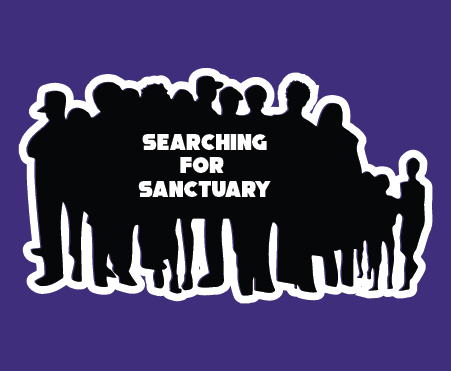
There Are No Sanctuaries
by Kesi Foster, Urban Youth Collaborative (NYC)
December 16, 2016
Black and Brown youth have never received sanctuary in this country, its cities, our communities, or in the institutions that are supposed to provide a safe, nurturing and supportive environment, including our schools. Despite Mayor’s and municipal governments from New York to Philadelphia and Los Angeles to the Bay Area cities, reaffirming their commitments to be “Sanctuary Cities,” Black and Brown youth are entangled in a web of oppressive, discriminatory, and dehumanizing policing and criminal justice systems weaved on the local level around their communities and schools.
The Sanctuary Cities movement emerged in the 1980’s when communities worked with churches to provide sanctuary for people leaving Central America due to political instability fostered by US involvement. The churches promised a safe haven free from the clutches of Immigration and Customs Enforcement. As the Obama Administration aggressively moved to break-up immigrant families, deporting more people than the 2.5 million people, the Sanctuary City movement began to redefine sanctuary to address the new conditions. This has included varying levels of commitment by Municipal governments to not cooperate with ICE. Some Sanctuary Cities have passed policies to not share local law enforcement information with ICE and not to detain individuals for minor crimes based on their status. Other districts have passed mostly symbolic commitments to limit interactions between local law enforcement and ICE. Certain districts provide legal and social supports for undocumented communities. Today, close to 50 cities across the country claim to be sanctuaries by providing protections from an unjust, unforgiving, and discriminatory federal criminal legal system.
Unfortunately, Black and Brown young people and their families in these same cities are not protected from unjust, unforgiving and discriminatory local criminal legal systems. From “broken windows” policing, to Stop and Frisk, to criminalizing the poor to the school-to-prison pipeline, the systems that Black and Brown youth are forced to navigate everyday make finding sanctuaries an impossible task.
Even if local officials don’t let ICE walk in the front door of our schools to take our children, local militarized police forces are taking Black and Brown youth out of the back door in handcuffs. This is not a sanctuary for Black and brown who are targeted and it’s not a safe place for them to learn. Black students are more than two times as likely to be referred to law enforcement than their white peers, and Latina and Indigenous students are similarly disproportionately criminalized and pushed into the criminal legal system by their schools. As the incoming Administration begins to expand on plans to expand its use of criminal to target undocumented communities, and push Stop and Frisk as a national strategy to increase law and order in Black communities, school-policing policies will do little to provide sanctuaries for any community.
State and local funding priorities facilitate putting young people in front of police, prosecutors, and judges when they need guidance counselors, mental health workers, and restorative justice practitioners. There is no evidence police in schools creates safer environments or helps improve academic outcomes, but for many Black, Brown, and Indigenous youth, police are more prevalent in their schools than guidance counselors and more empowered than school administrators. Police were never put in schools with Black and Brown youth to keep them safe. They are there to police them and that will always end in their criminalization and incarceration. If Black and Brown youth are ever going to be free from the clutches of the local and federal criminal legal systems that stalk them in their communities and schools, we must respond to the new conditions created by the infrastructure put in place by the Obama administration and those that preceded him and by the explicit intentions of the incoming Administration to oppress, deport, and incarcerate Black, Latina, Muslim and Indigenous communities. We have to respond collectively across struggles.
Our resistance must keep all undocumented communities – Latina, Black, Asian, Muslim free from the federal criminal legal system and dismantle the local criminal legal system that has denied Black communities from ever finding sanctuary in this country. As communities, we have an opportunity to connect our struggles, to expand ideas and strategies to go beyond protection from one system because these systems are all interconnected. We need to come together and collectively transform our institutions, communities, and cities into sites of resistance and protection for everyone.
